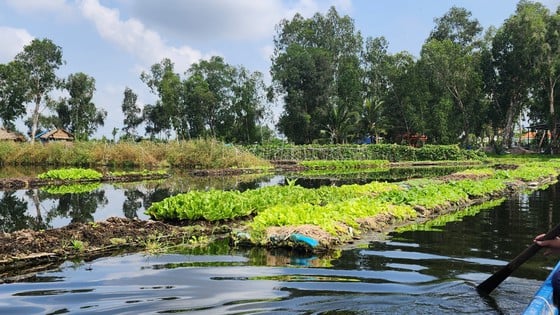 |
Hundreds of vegetable rafts floating on the water |
Make a raft from old plastic bottles
Growing vegetables on water – a rather strange model in agricultural production and also the only model in Long An province that Mr. Nguyen Van Dac has effectively implemented. Mr. Dac said that he really likes organic farming but because he has no land, while the water surface is vast, he took advantage of this area to design floating rafts to grow clean vegetables.
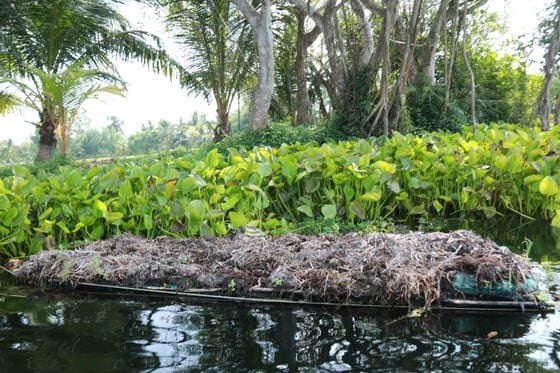 | ||
|
To do that, Mr. Dac collects plastic bottles, covers them with nets and makes bamboo frames to fix them to create floating rafts 1m wide and 3m long. These rafts are connected by cables to the shore. At the same time, he collects water hyacinth available on the lake surface, dries it, and composts it with organic fertilizers and straw. Then, he covers the rafts so that vegetable seeds can be sown.
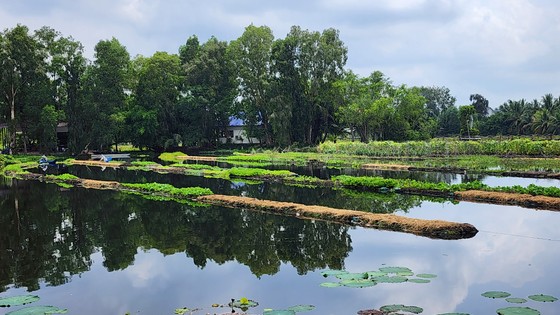 |
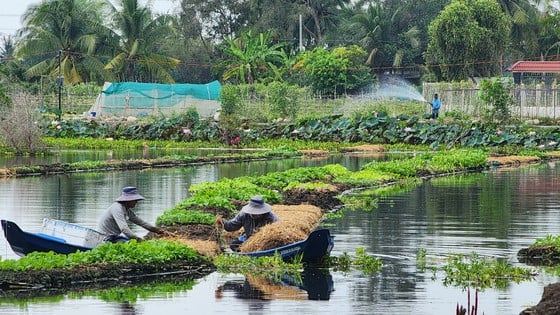 |
Prepare new vegetable rafts |
After more than 3 years, up to now, Mr. Dac has owned nearly 400 aquatic vegetable rafts on an area of about 3000m² of water surface. Every day, Mr. Dac harvests about 300 - 400 kg of vegetables: squash, pumpkin, loofah, tomato, bitter melon, herbs, green vegetables of all kinds..., selling price from 40,000 VND/kg or more depending on the type.
According to Mr. Dac, to get the results today, he spent a lot of time, sweat, and effort. As for money, it is impossible to calculate, because he is determined to do it at all costs, so if he fails this time, he will spend it again.
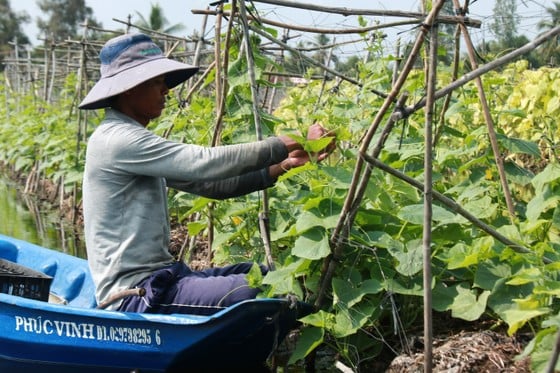 |
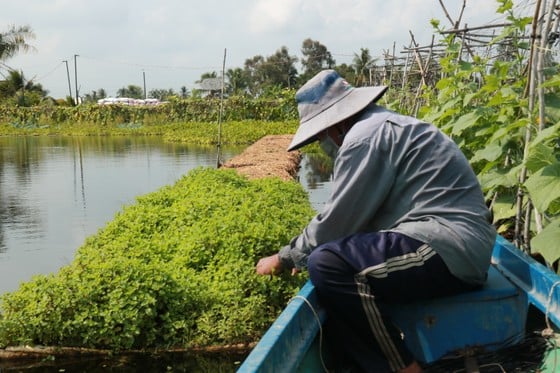 |
Vegetable care |
“Growing vegetables on water is only difficult at first. After many failures, I have gained a lot of experience and feel that it is much easier than growing on the ground. The vegetables are isolated, reducing pests by more than 80%, and there is no need to water them because the roots and stems of water hyacinth take water from below. The high humidity makes the vegetables crispy and sweet, and the harvest time is shorter. For example, green vegetables such as mustard greens can be harvested after more than 10 days of planting, about a week shorter than growing on the ground," said Mr. Dac.
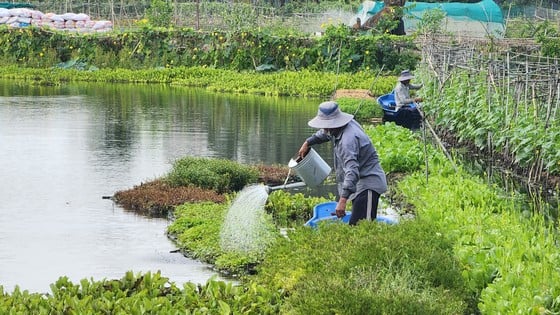 | ||
|
Currently, I have successfully grown Da Lat lettuce. I will research and expand the cultivation of many Da Lat vegetable varieties that have previously only been grown in Da Lat. In addition, I will develop clean straw mushrooms because I have just discovered that through the composting process, straw mushrooms have appeared naturally. At the same time, I will collect all the water hyacinth to make fertilizer and grow clean vegetables on the remaining 5 hectares of water surface. These vegetables are inspected, so I am only afraid that there will not be enough to sell, not afraid that they will not be sold," said Mr. Dac.
 |
Preserving natural ecosystem in vegetable farm on raft |
Preserve the natural ecosystem
On the way to Mr. Dac’s vegetable farm, the landscape is kept pristine, with only gravel lightly spread to reduce mud and sinking when it rains. The lakeside area is planted with colorful flowers to repel insects. Flowers and weeds that have a smell that repels pests are kept.
Under the lake shore, lotus and water lilies crowded together to show off their colors. Small boats and rafts were rowed gently by workers, gliding around the vegetable rafts to carry out the planting and care work, amidst the whistling wind and the chirping of birds.
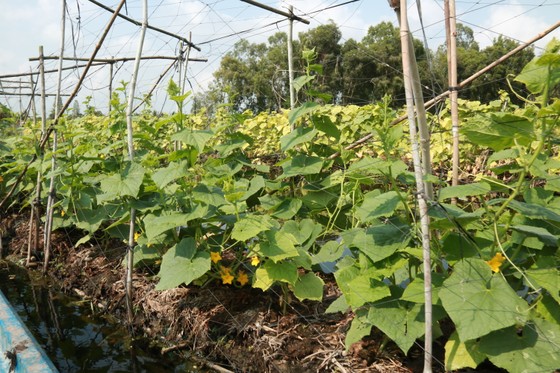 |
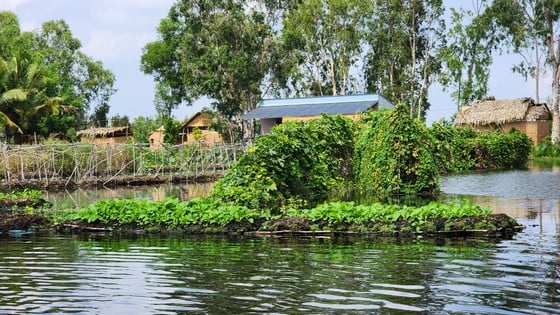 |
Many different types of vegetables are grown on rafts. |
On the small boat taking us to see his achievements, Mr. Dac confided that with all his heart, he tries to preserve this place as a natural ecological area. At night, if not necessary, he will not turn on the electricity to let birds fly to take shelter, and even when catching insects, the workers only use flashlights.
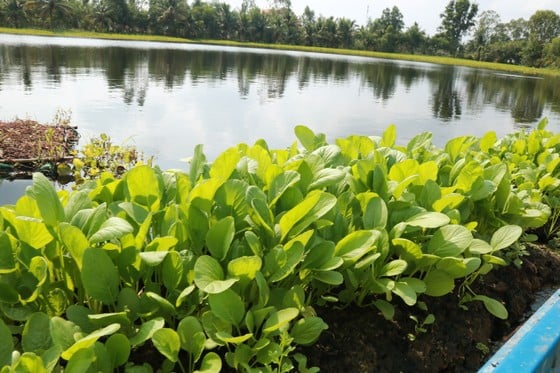 |
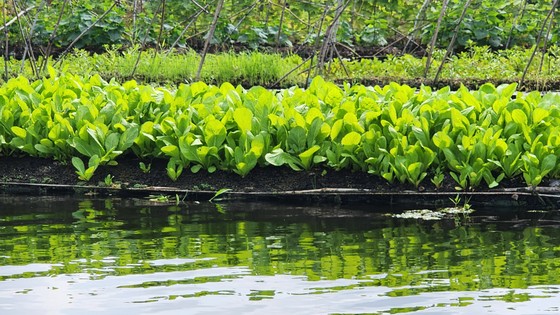 |
Water spinach will be food for fish. |
In addition, fish are also raised below the lake. The fish here are only vegetarian, meaning that all types of drifting vegetables will be used as food for the fish, absolutely no industrial food or other food is used. Therefore, not only do the vegetables have a delicious and distinct flavor, but the fish meat is also unusually chewy and delicious.
The boat was close to the raft of cherry tomatoes moving on the water surface. Mr. Dac picked some ripe red tomatoes and invited us to try them. Mr. Dac confirmed that the vegetables were not sprayed with pesticides, the bags were clean, and just needed to be wiped off the dust and they could be used immediately.
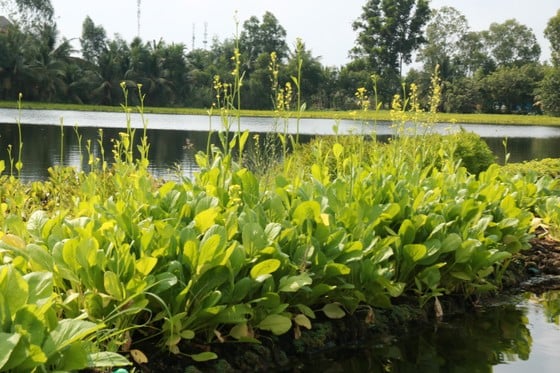 |
Lush green rafts |
Despite the scorching sun, floating on the lake, we felt quite cool, sipping juicy, crispy tomatoes with a sweet and slightly sour taste while listening to Mr. Dac confide.
“In the future, in addition to expanding the area of vegetable rafts, I still have the idea of building this place into a green - clean - beautiful ecological area to serve people, students, etc. to visit and research clean agriculture as well as this aquatic raft model. At the same time, I will organize meals using existing products on the farm. However, this model is currently operated by only me, so it takes time to prepare everything to ensure safety as well as stable labor,” said Mr. Dac.
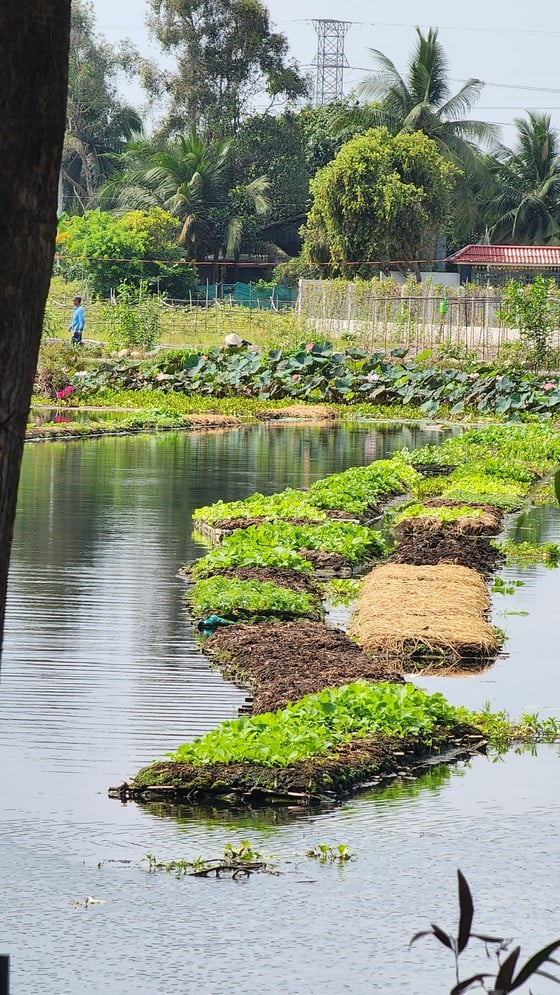 |
The vegetable rafts are fixed to the shore with cables. |
Mr. Nguyen Thanh Truyen, Director of the Department of Agriculture and Rural Development of Long An province, said that the model of growing vegetables on aquatic rafts of Mr. Nguyen Van Dac, although newly implemented, initially brought high efficiency. Consumers have an additional source of clean vegetables to serve family meals.
 |
Also from this model, the authorities encourage people to take advantage of previously exploited water tunnels or low-lying areas flooded all year round to make rafts to grow clean vegetables, both improving family meals and increasing income. However, people must research carefully to ensure safety. At the same time, they connect with supermarket agents to find outlets for the products.
Source


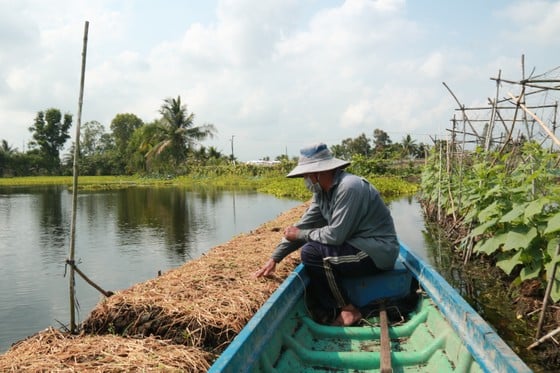
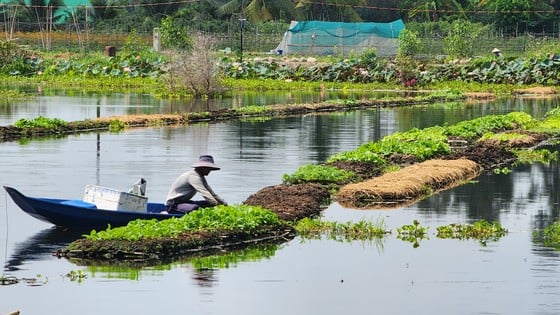
![[Photo] Military doctors in the epicenter of Myanmar](https://vstatic.vietnam.vn/vietnam/resource/IMAGE/2025/4/6/fccc76d89b12455c86e813ae7564a0af)
![[Photo] Solemn Hung King's Death Anniversary in France](https://vstatic.vietnam.vn/vietnam/resource/IMAGE/2025/4/6/786a6458bc274de5abe24c2ea3587979)
![[Photo] Vietnamese rescue team shares the loss with people in Myanmar earthquake area](https://vstatic.vietnam.vn/vietnam/resource/IMAGE/2025/4/6/ae4b9ffa12e14861b77db38293ba1c1d)
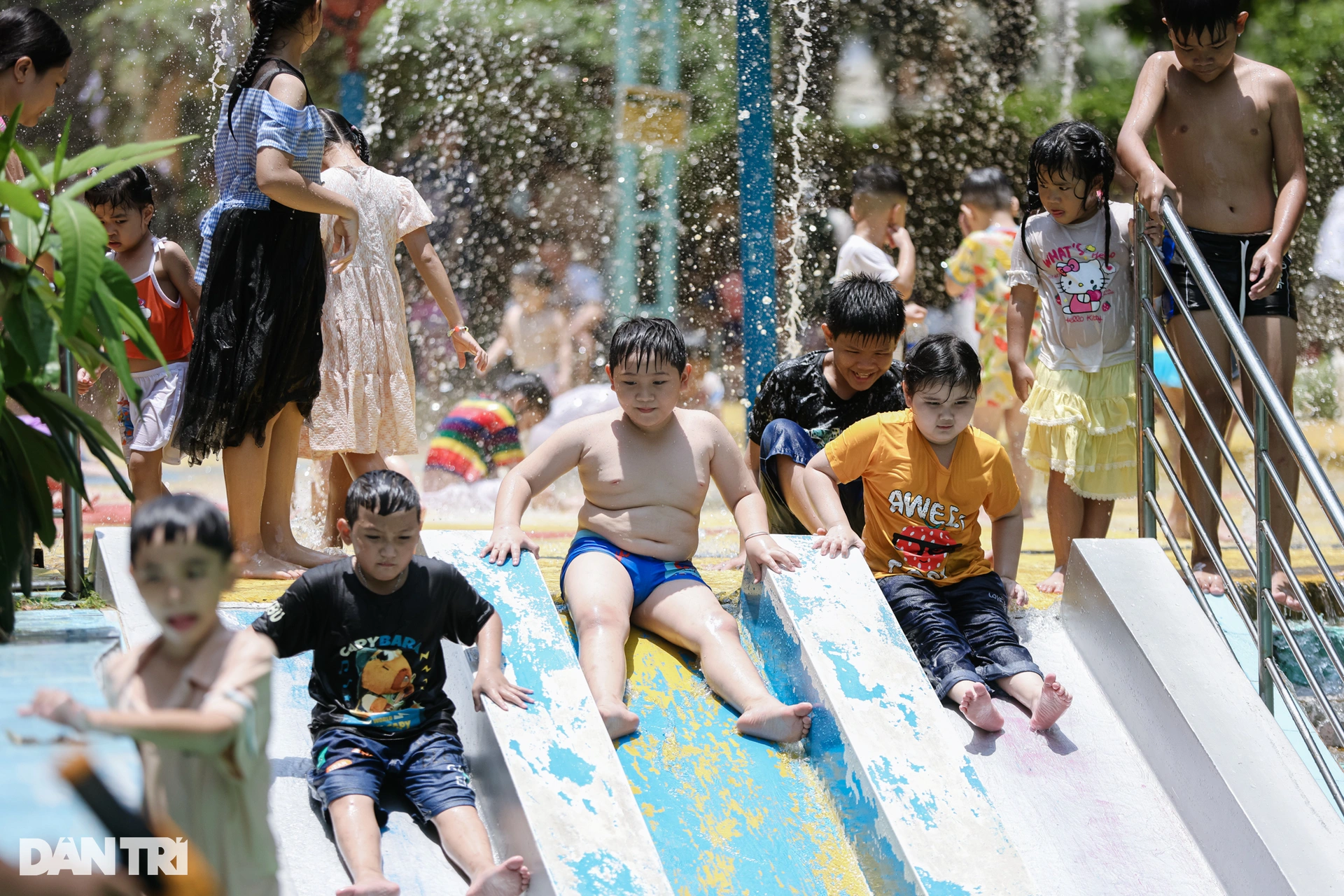
![[Photo] Prime Minister Pham Minh Chinh chairs the regular Government meeting in March](https://vstatic.vietnam.vn/vietnam/resource/IMAGE/2025/4/6/8393ea0517b54f6791237802fe46343b)
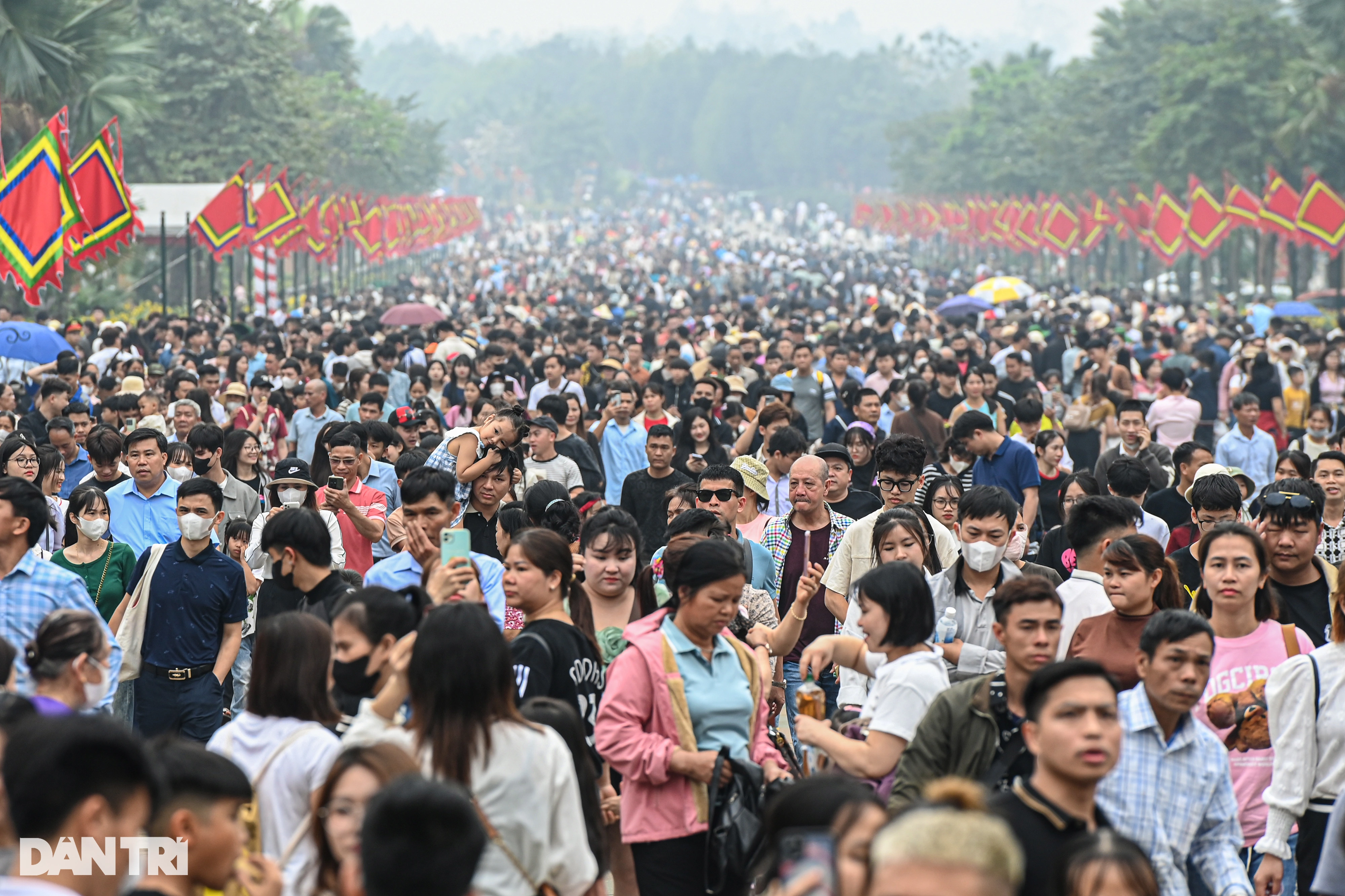
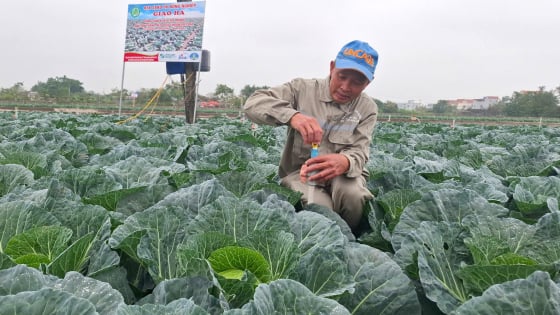

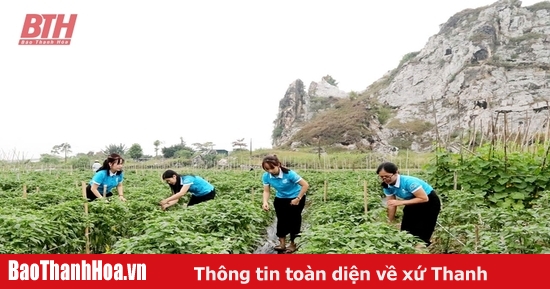

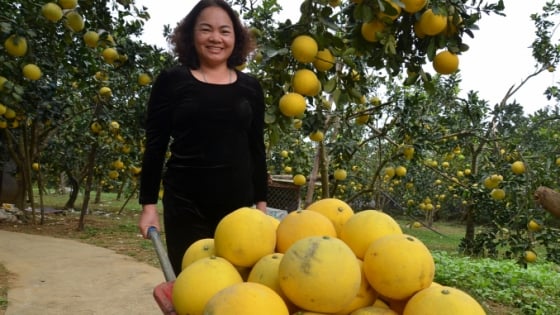
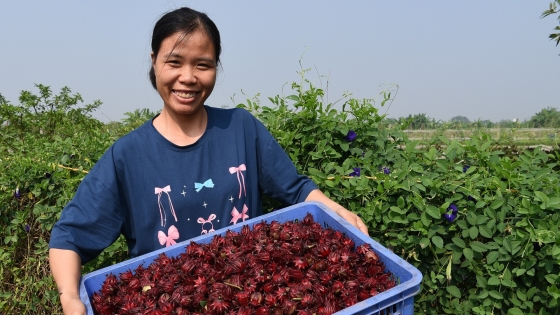
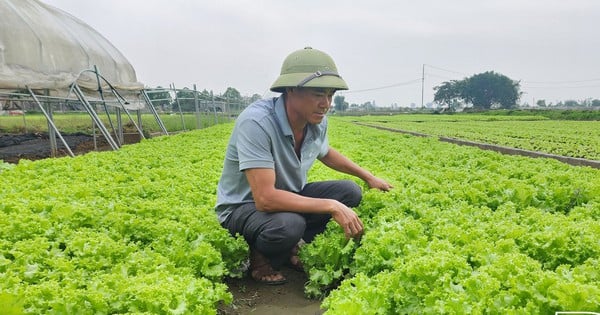

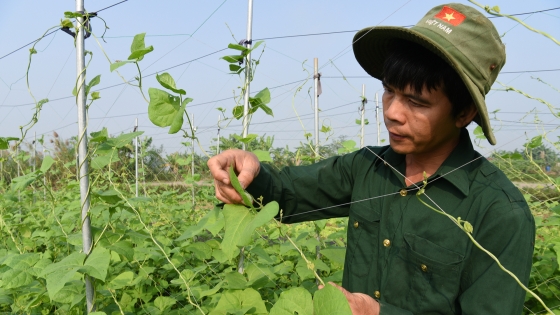
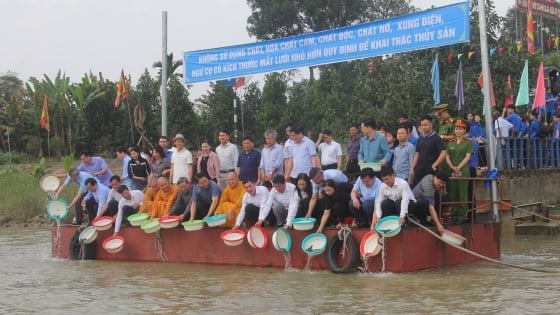
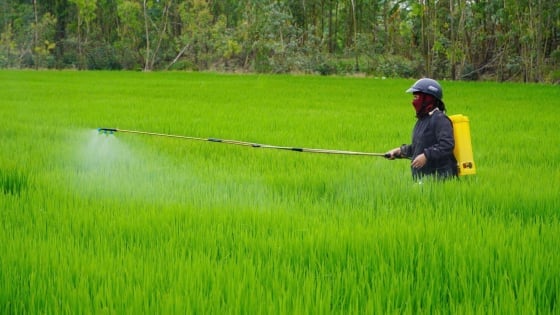
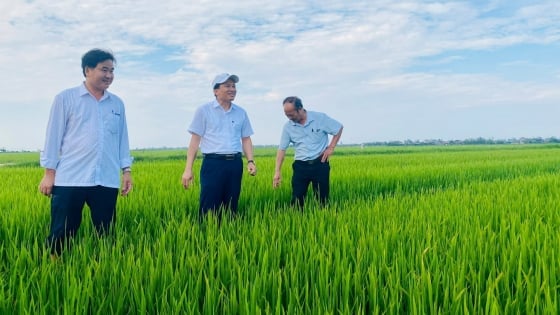

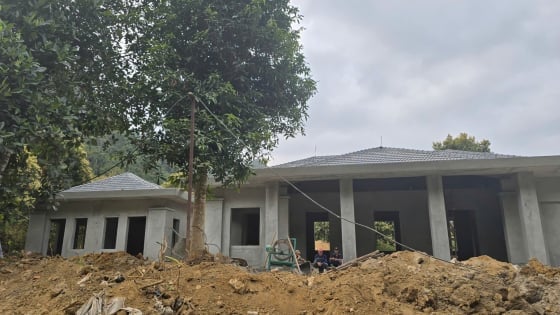
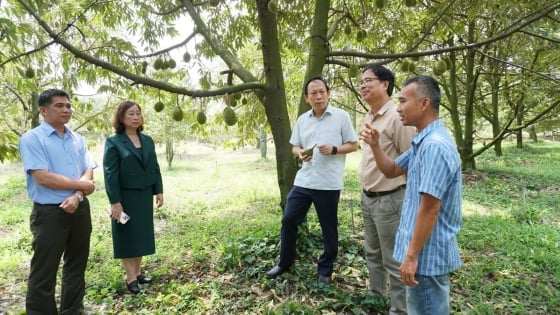

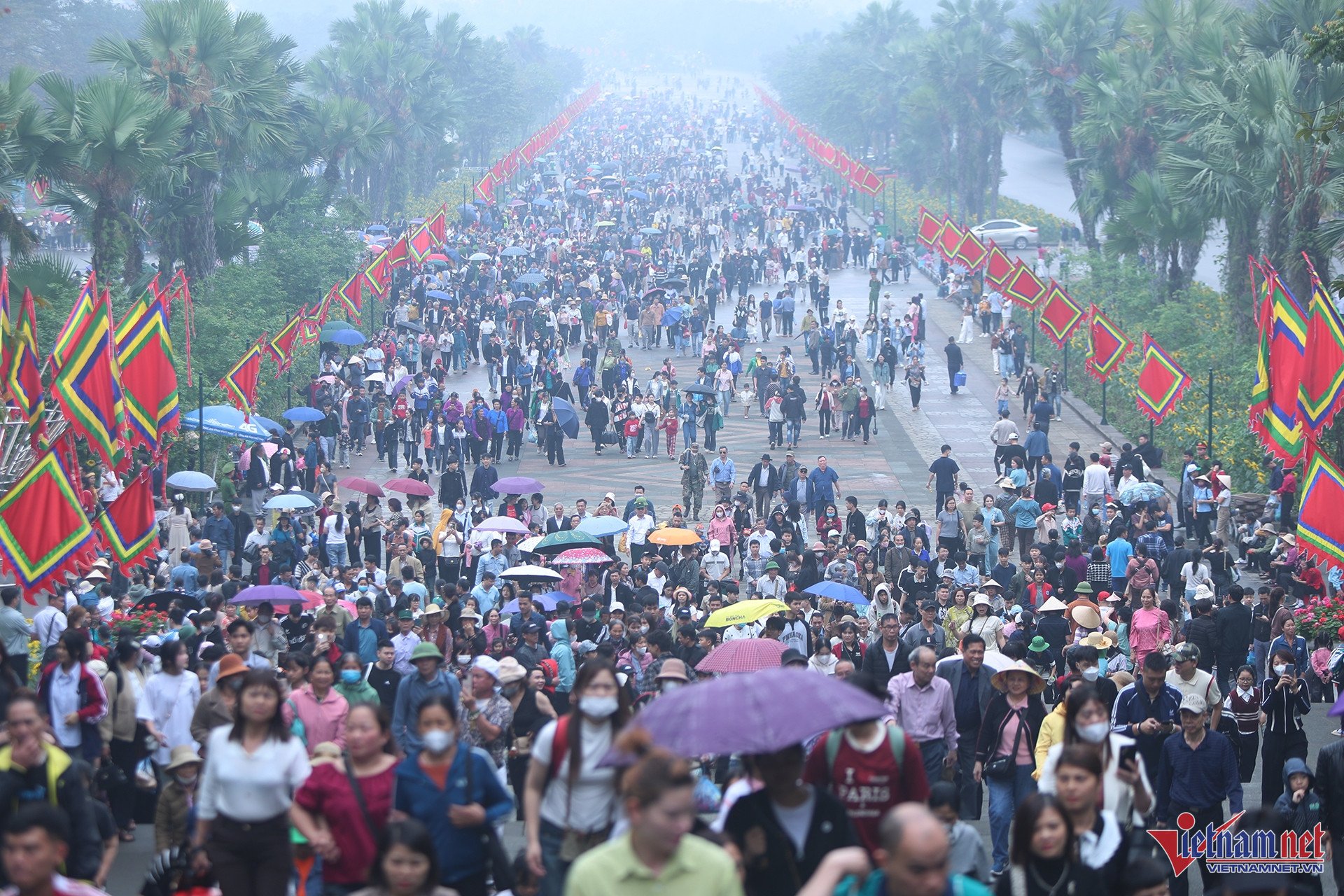
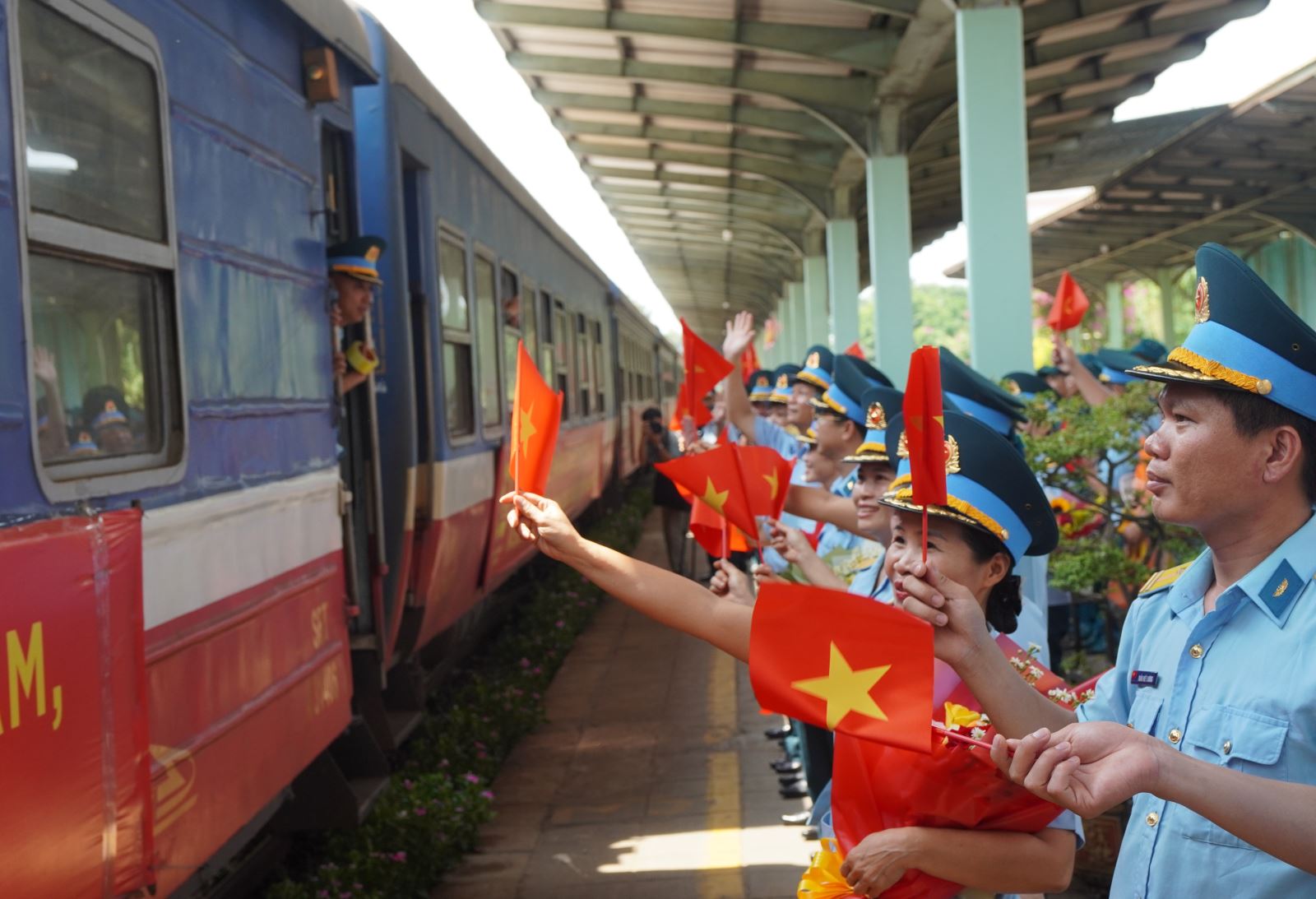

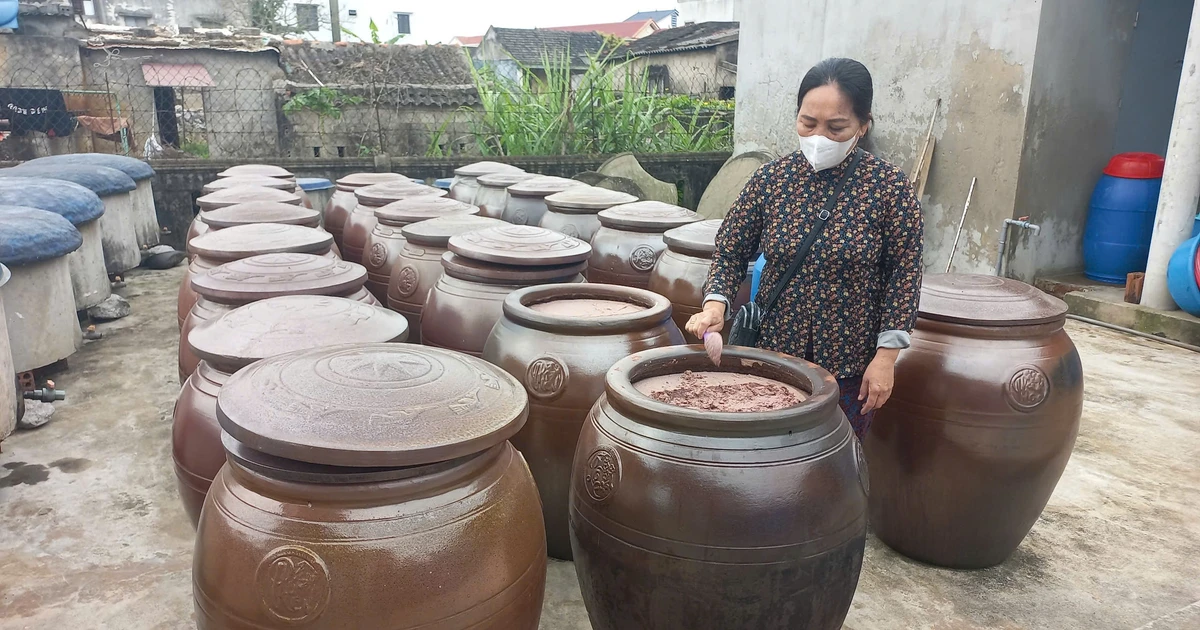





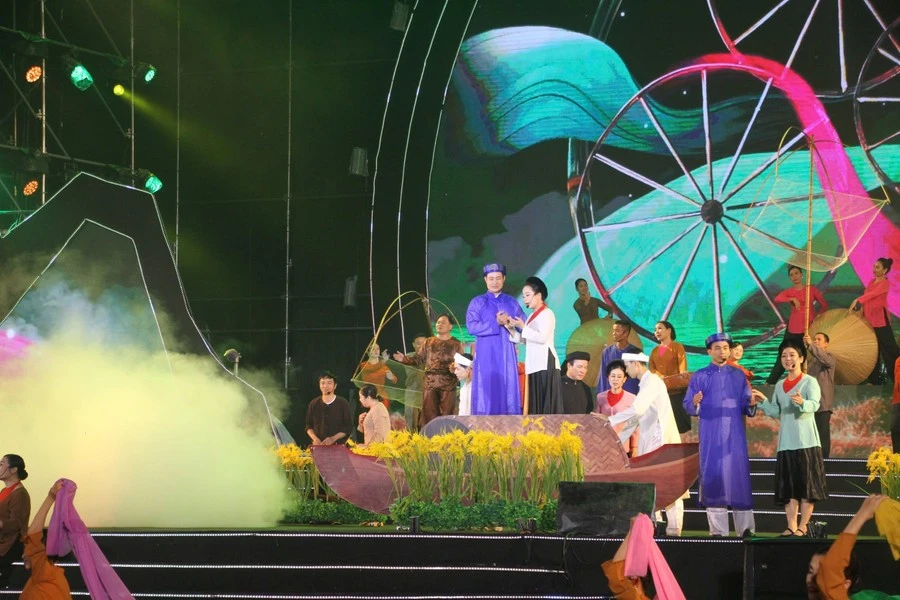

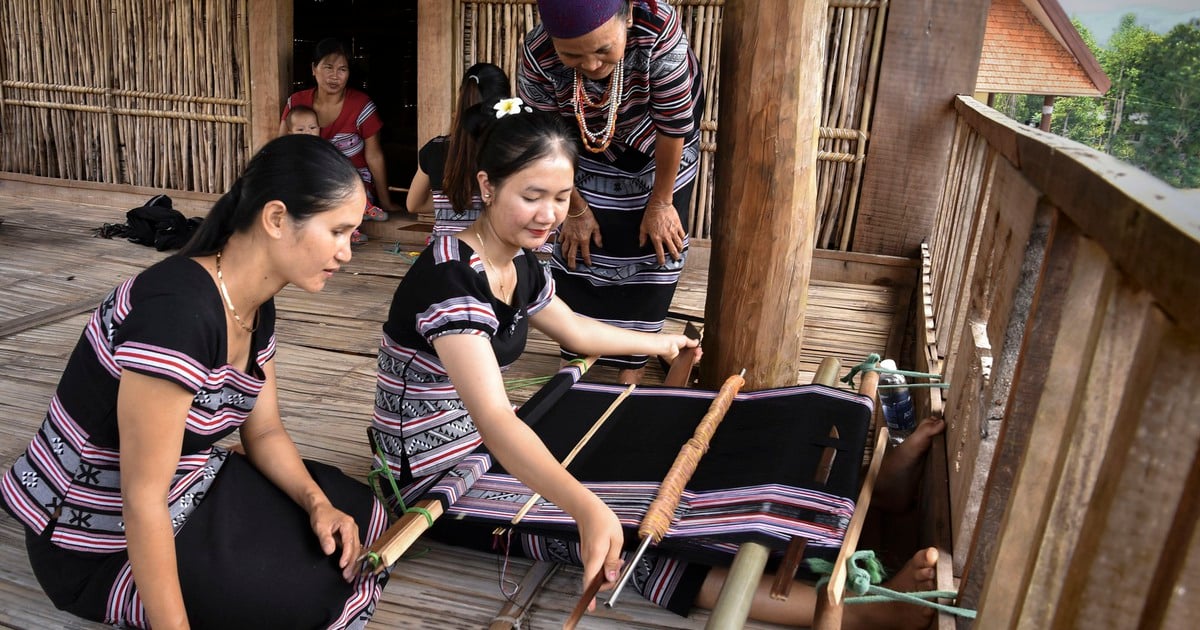



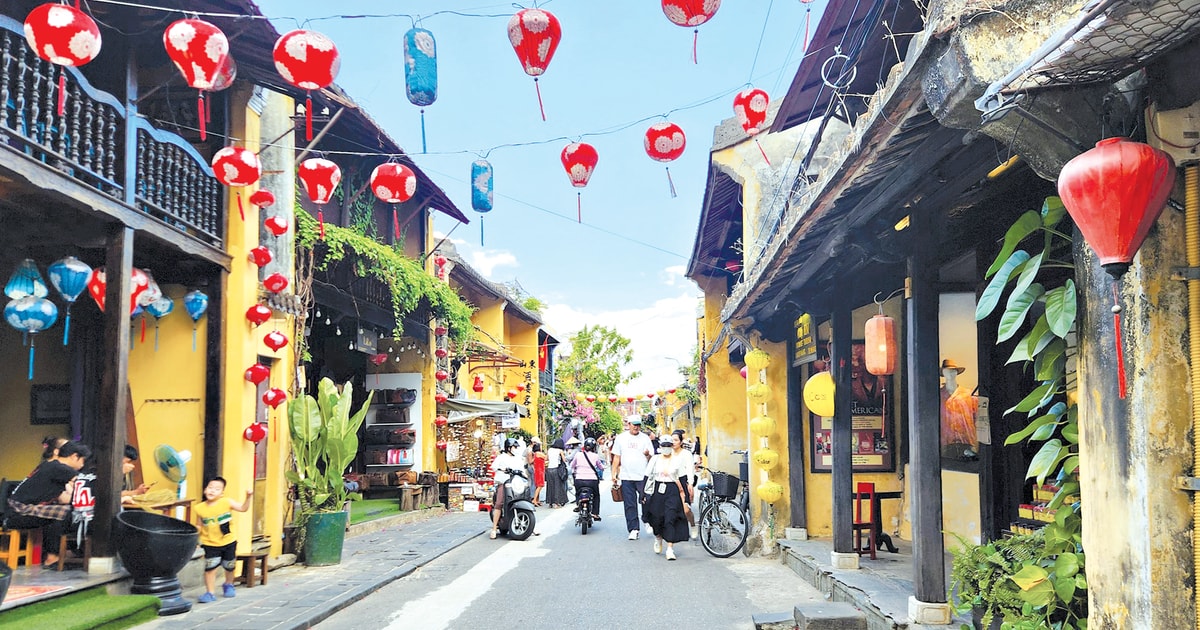

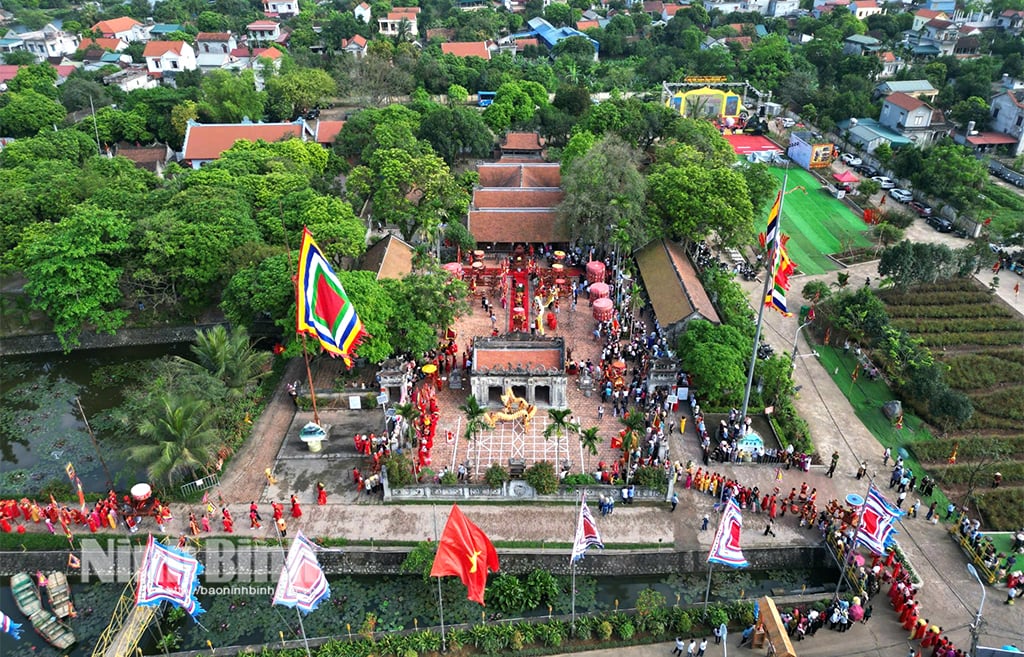



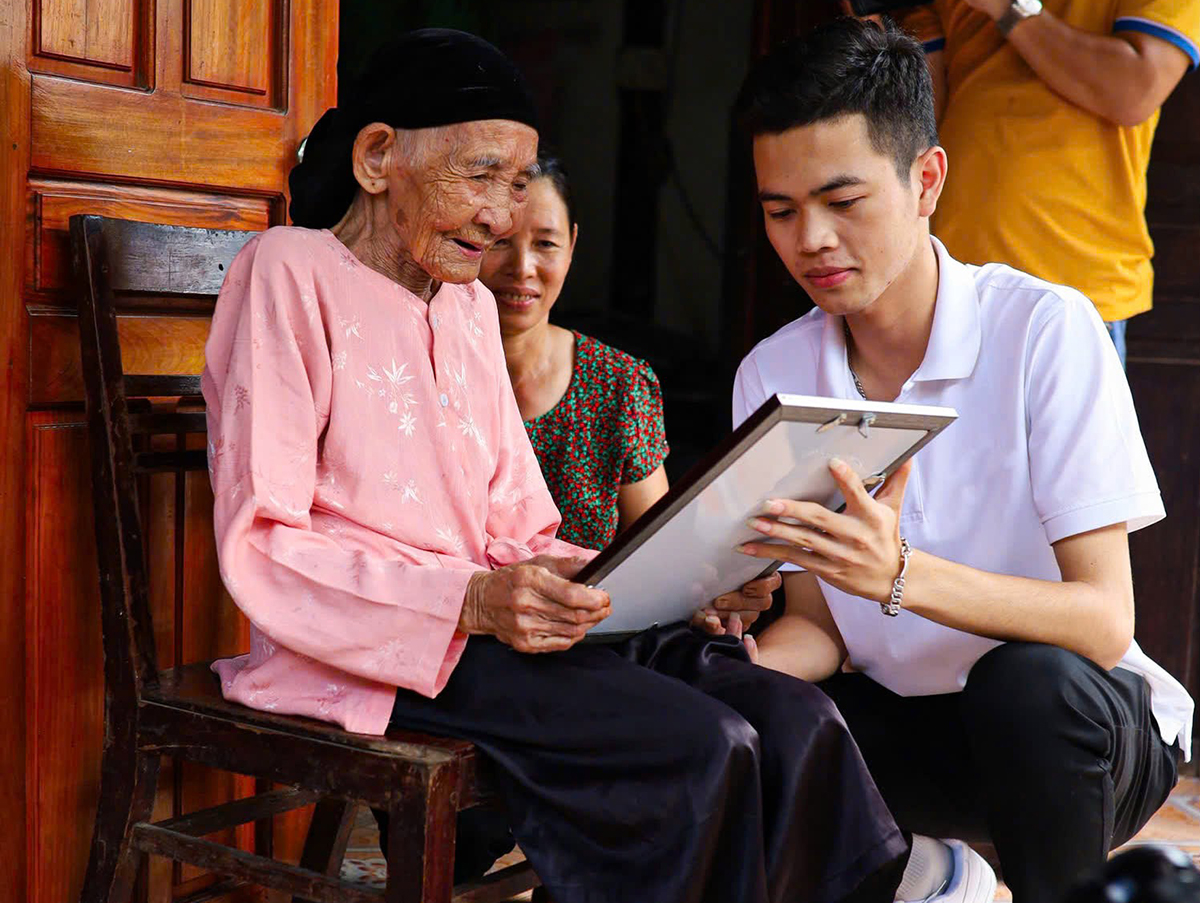




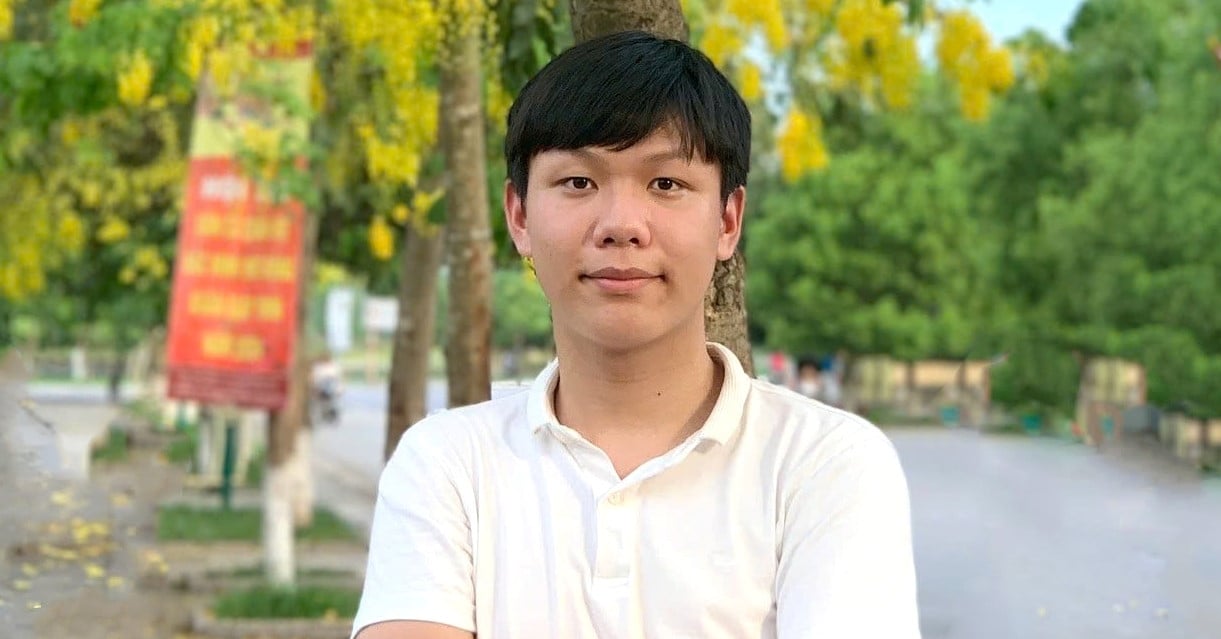

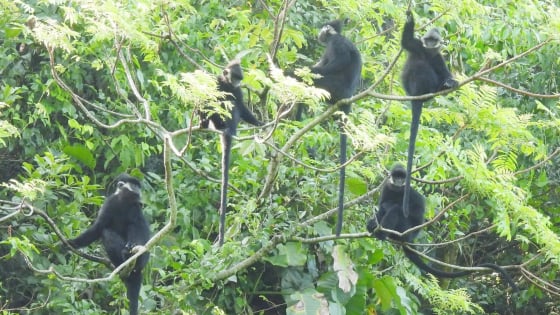
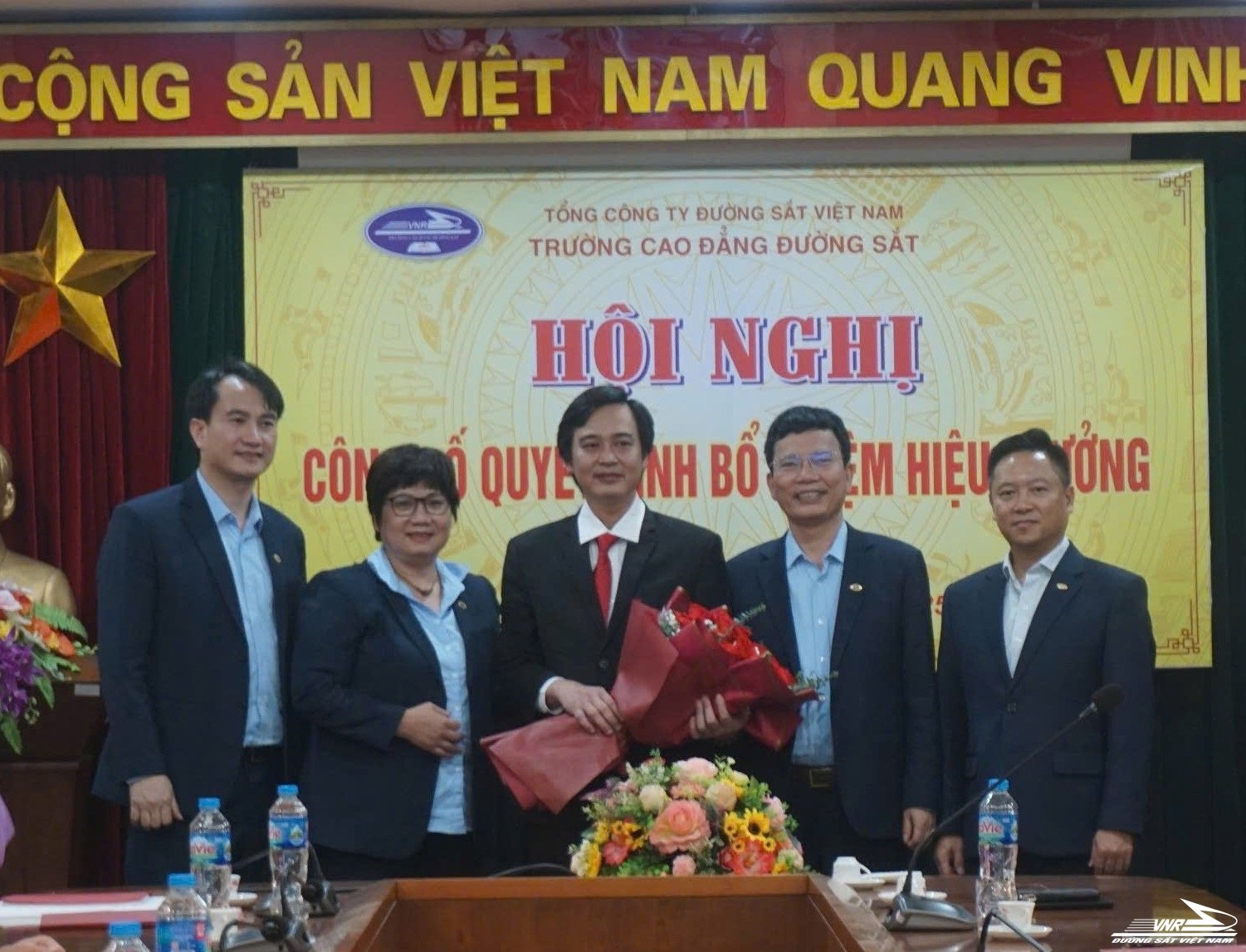
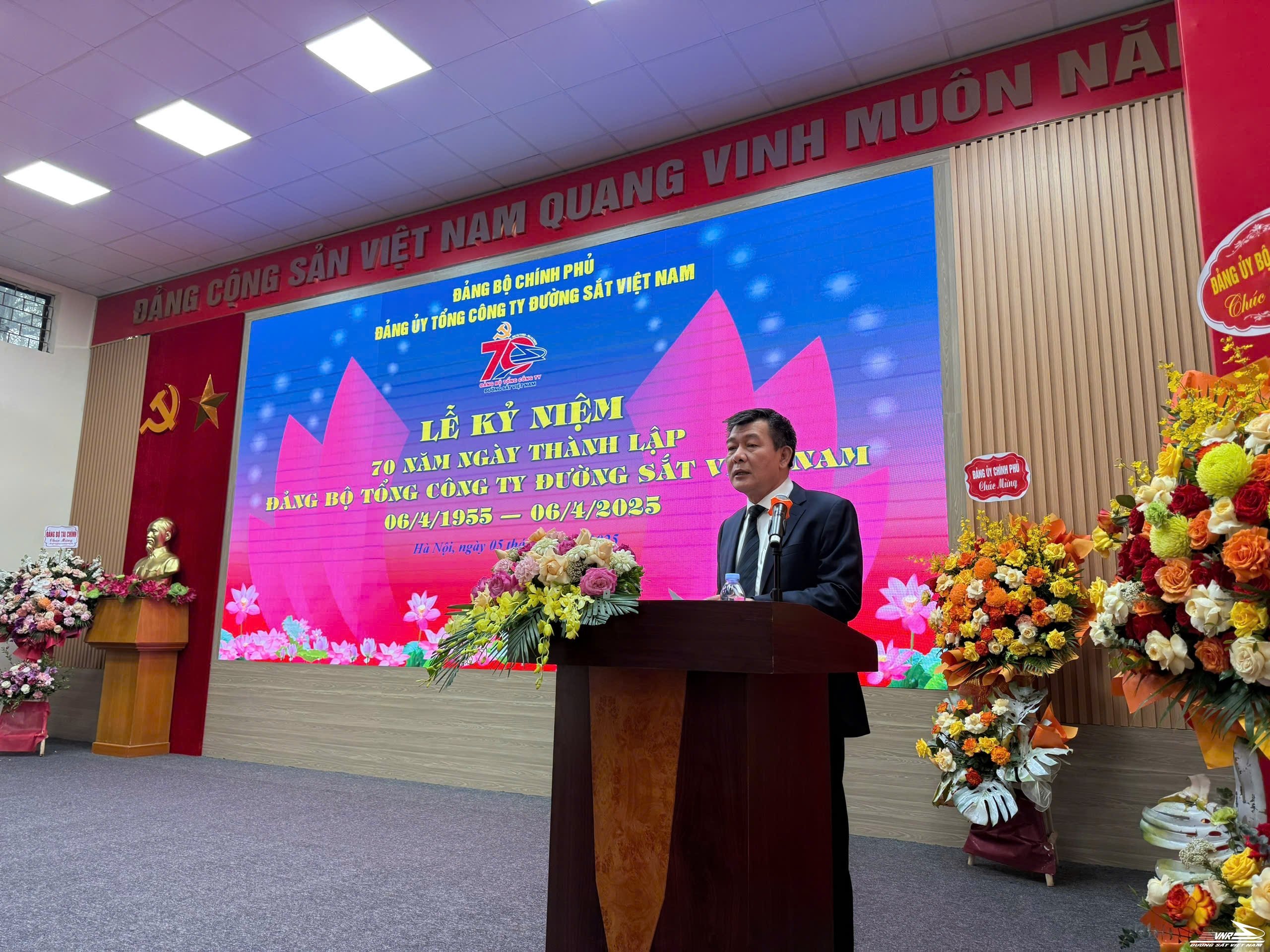

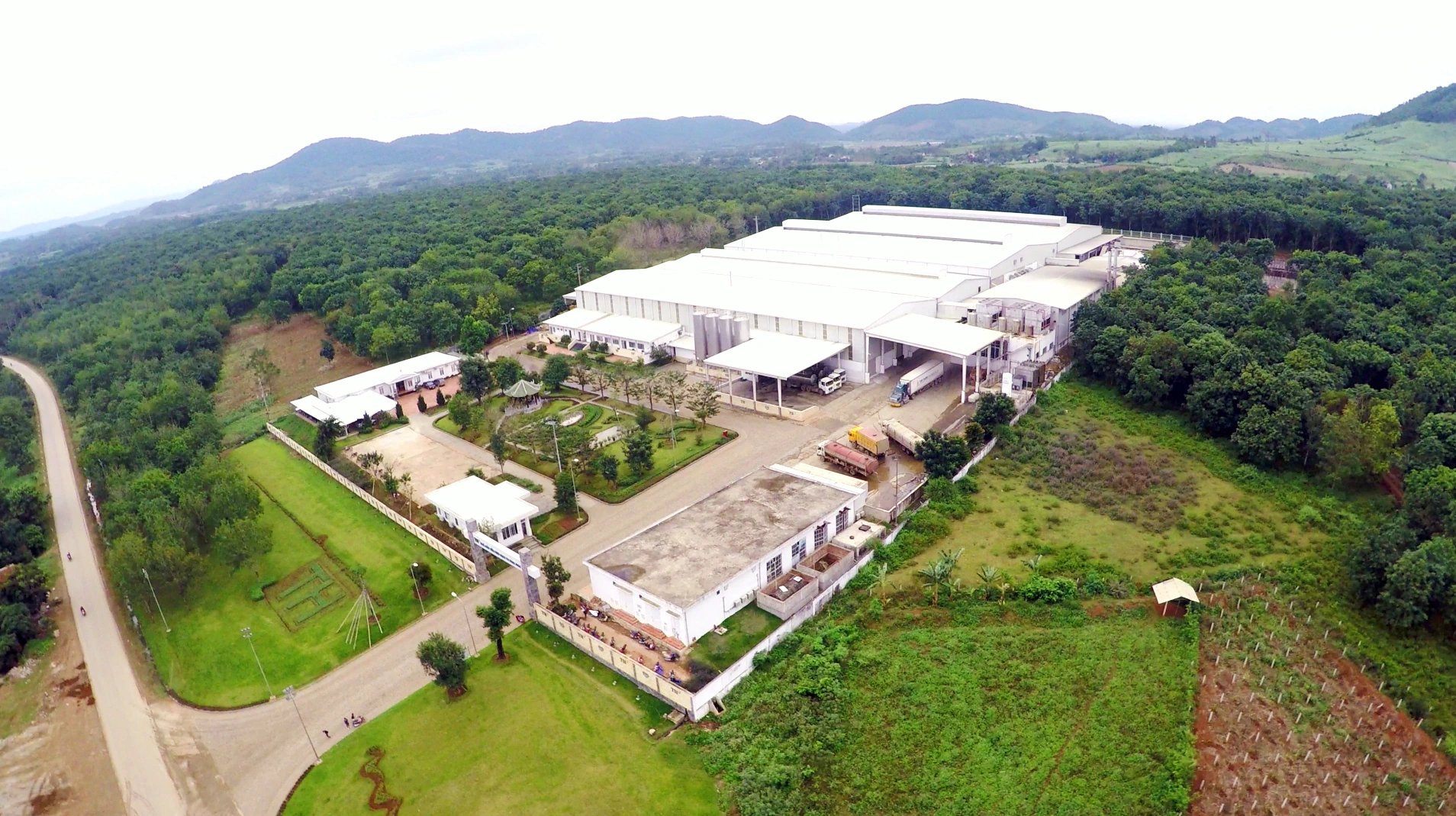
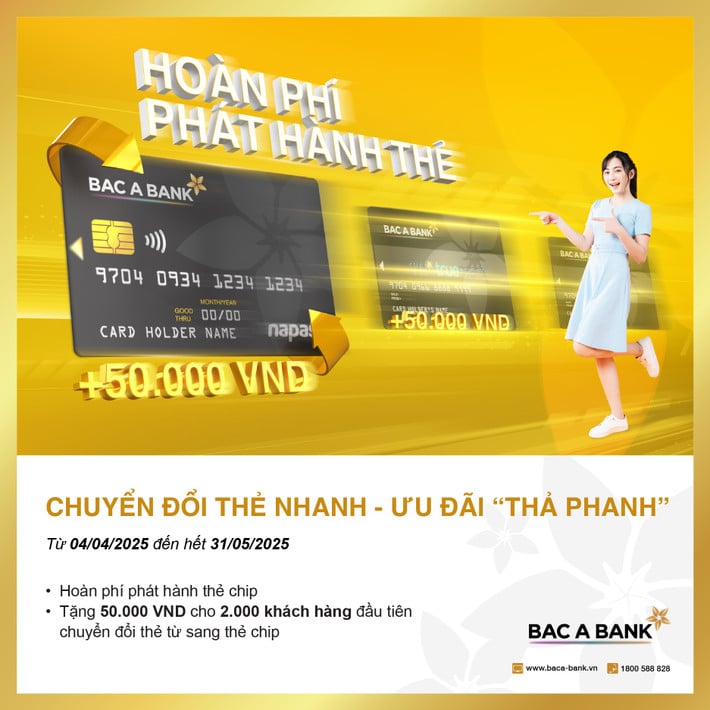


















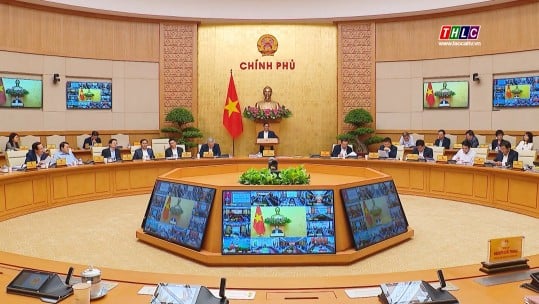







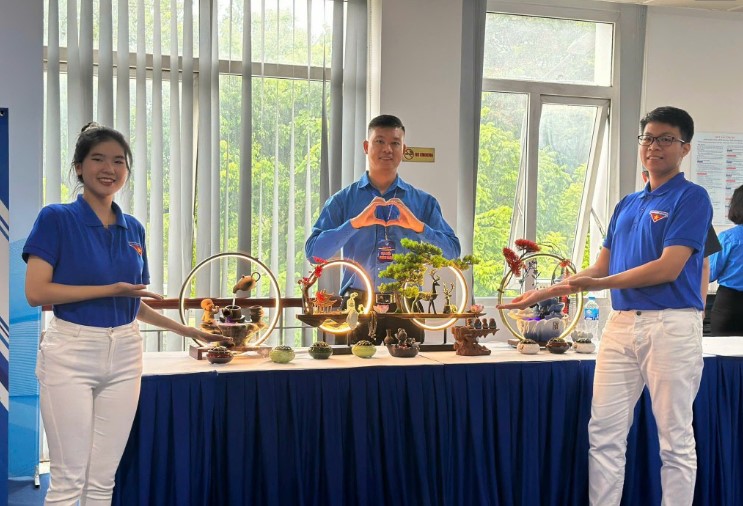
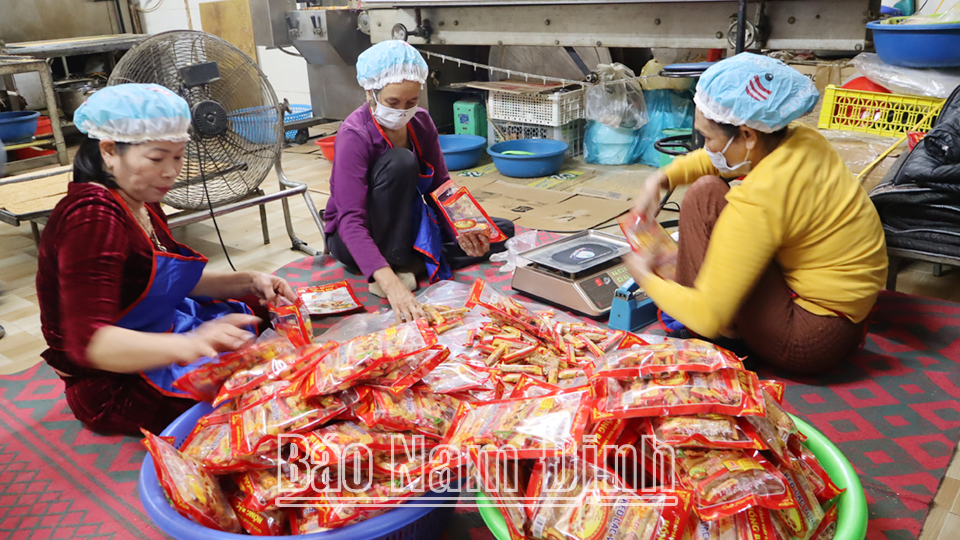





Comment (0)